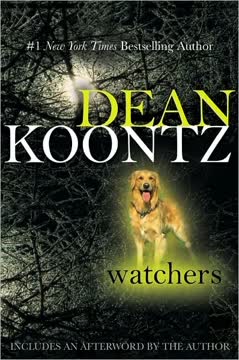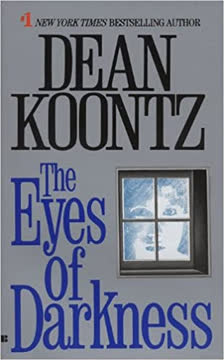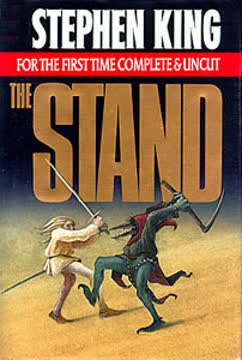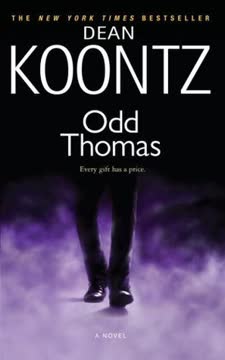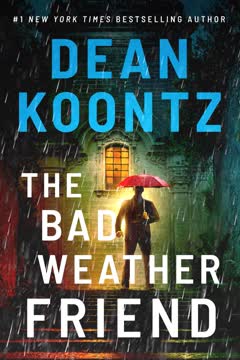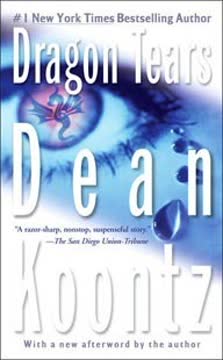Plot Summary
A Birthday in the Wild
On his thirty-sixth birthday, Travis Cornell, a former Delta Force operative haunted by loss and loneliness, hikes into the Santa Ana foothills, contemplating the emptiness of his life. His aimless journey is interrupted by a golden retriever, battered and bleeding, who blocks his path and seems to warn him of an unseen danger lurking in the woods. When Travis heeds the dog's warning, they narrowly escape a terrifying, unseen pursuer. This encounter marks the beginning of a profound transformation for Travis, as the dog's uncanny intelligence and loyalty begin to draw him out of his despair and into a new sense of purpose.
The Dog with Secrets
Back in civilization, Travis is astonished by the dog's behavior: it opens glove compartments, fetches specific items, and even arranges dog biscuits into a question mark, suggesting a level of intelligence far beyond any ordinary animal. Naming the dog Einstein, Travis realizes he has found a companion who not only understands him but seems to possess a mysterious past. As Travis and Einstein bond, the dog's fear of being found and his aversion to collars hint at a traumatic history, while his joy in simple pleasures rekindles Travis's will to live.
Shadows and Pursuers
Elsewhere, a professional assassin named Vince Nasco is hired to eliminate scientists connected to a secretive research project at Banodyne Laboratories. As Nasco methodically kills his targets, he absorbs their "life energy," believing it will grant him immortality. Meanwhile, Nora Devon, a reclusive woman traumatized by her domineering aunt, faces her own terror when a predatory repairman begins stalking her. The narrative weaves together these disparate threads, building a sense of mounting danger as both human and inhuman threats converge on Travis, Einstein, and Nora.
Nora's Awakening
Nora, long isolated and convinced of her own unattractiveness, is shaken by the repairman's harassment but finds unexpected strength in herself. Her encounter with Einstein in a park—where the dog intervenes to protect her from her stalker—sparks a connection with Travis. Their shared concern for the dog and mutual loneliness draw them together, and Nora begins to challenge the beliefs instilled by her aunt, daring to imagine a life of freedom, friendship, and even love.
The Outsider Stalks
In the wilds, a genetically engineered creature known as The Outsider—born of the same Banodyne experiments as Einstein—leaves a trail of mutilated animals and humans. Driven by rage, self-loathing, and a singular obsession with destroying Einstein, The Outsider is both intelligent and savage, capable of evading capture and sowing terror. As government agents and the assassin Nasco close in, Travis, Nora, and Einstein realize they are being hunted not only by men but by something far worse.
Unlikely Family Forms
Travis and Nora, united by their affection for Einstein and their shared struggles, fall in love and marry. They go on the run, adopting new identities to evade both the government and Nasco. Einstein's intelligence becomes ever more apparent as he learns to communicate through written words and even Scrabble tiles, revealing the truth of his origins and the danger posed by The Outsider. The trio becomes a family, each finding in the others the acceptance and purpose they had long been denied.
The Assassin's Hunt
Vince Nasco, obsessed with acquiring Einstein for his own gain, uses underworld contacts to trace Travis and Nora's new identities. His path is marked by violence and delusion, as he believes each murder brings him closer to immortality. Meanwhile, government agent Lemuel Johnson, tasked with recovering both Einstein and The Outsider, finds his own worldview challenged by the moral implications of the Banodyne experiments and the loyalty of those protecting the dog.
The Language of Miracles
As Einstein recovers from a near-fatal illness, his ability to communicate with Travis and Nora deepens. Using Scrabble tiles and later a computer, he expresses complex thoughts, emotions, and even humor. The family's bond is tested by Einstein's vulnerability and the ever-present threat of discovery, but their love and determination to protect him only grow stronger. Einstein's longing for freedom and dignity becomes a central theme, as does the question of what it means to be truly human—or truly alive.
The Monster's Trail
The Outsider, driven by an inexplicable psychic link to Einstein, draws ever closer to the family's new home on the California coast. Travis fortifies their house, preparing for the inevitable confrontation. The government's search intensifies, but agent Johnson, changed by his experiences, begins to question the righteousness of his mission. The stage is set for a final reckoning, as love, loyalty, and the will to survive are pitted against hatred, fear, and the legacy of human hubris.
Love, Loss, and Loyalty
The family's fragile peace is shattered when Nasco, the assassin, finds them. In a violent confrontation, Nora kills Nasco to protect her unborn child and Einstein. But the true threat remains: The Outsider invades their home, gravely injuring Einstein and forcing Travis into a desperate battle. The creature, torn between its programmed hatred and a yearning for connection, is finally destroyed by Travis, but not before inflicting deep wounds—both physical and emotional—on the family.
The Final Confrontation
As the government closes in, agent Johnson arrives, only to find that Einstein has died from his injuries. Travis refuses to reveal the dog's burial place, determined to let his friend rest in peace. The family's ordeal leaves them changed but unbroken, their love and loyalty having triumphed over the darkness that pursued them. Johnson, too, is transformed, choosing to leave his job and seek a more meaningful life.
A New Beginning
Months later, Travis and Nora have a child, and Einstein's legacy lives on through his puppies, who inherit his intelligence and gentle spirit. The family, now surrounded by friends and a new generation of remarkable dogs, looks to the future with hope. The story ends with a sense of wonder and gratitude for the healing power of love, the possibility of redemption, and the enduring bond between humans and their animal companions.
Characters
Travis Cornell
Travis is a former Delta Force operative whose life has been marked by loss: the deaths of his family, his wife, and his comrades have left him emotionally isolated and convinced he is cursed. His encounter with Einstein, the extraordinary dog, rekindles his will to live and draws him into a journey of self-discovery, love, and heroism. Travis's psychological arc is one of healing, as he learns to trust, love, and fight not only for himself but for those he comes to see as family. His military skills and sense of responsibility make him both protector and avenger, but it is his capacity for loyalty and sacrifice that defines his ultimate transformation.
Nora Devon
Nora is introduced as a shy, self-effacing woman, emotionally scarred by a lifetime under her aunt's oppressive rule. Her journey is one of awakening: through her bond with Einstein and her relationship with Travis, she discovers inner strength, self-worth, and the courage to face both human and inhuman threats. Nora's psychological growth is profound—she moves from victimhood to agency, from fear to love, and from isolation to the heart of a new family. Her nurturing instincts, artistic talent, and resilience make her both a guardian and a symbol of hope.
Einstein
Einstein is a genetically engineered golden retriever whose intelligence rivals that of humans. Created in a secret lab, he escapes captivity and seeks not only survival but connection and dignity. Einstein's ability to communicate—first through gestures, then written words—makes him both a marvel and a target. His loyalty, humor, and longing for freedom endear him to Travis and Nora, while his fear of The Outsider and the lab's agents drive much of the plot. Einstein's arc is one of self-actualization: he moves from fugitive to beloved family member, and his legacy endures through his offspring.
The Outsider
The Outsider is a product of the same experiments that created Einstein, but where the dog is a triumph, The Outsider is a failure—an intelligent but hideously deformed creature engineered for war. Tormented by self-loathing and a psychic link to Einstein, The Outsider is both victim and villain, leaving a trail of violence as it seeks to destroy its "brother." Its psychological torment, longing for acceptance, and capacity for both cruelty and sorrow make it a complex antagonist, a symbol of the dangers of unchecked scientific ambition and the pain of being denied love.
Vince Nasco
Nasco is a professional killer who believes he can absorb the life energy of his victims, granting him invincibility. His pursuit of Einstein is driven by greed, delusion, and a twisted sense of destiny. Nasco's psychological profile is that of a sociopath: remorseless, cunning, and obsessed with power. His path intersects with the family's at the worst possible moment, forcing Nora to confront and overcome her deepest fears. Nasco's arc ends in violence and futility, a cautionary tale of the emptiness of evil.
Lemuel Johnson
Johnson is the NSA agent tasked with recovering both Einstein and The Outsider. Initially committed to his mission, he is gradually changed by the loyalty and love he witnesses in Travis, Nora, and their allies. Johnson's psychological journey is one of self-examination: he questions the morality of his orders, the cost of obedience, and the meaning of justice. Ultimately, he chooses compassion over duty, allowing the family to keep their freedom and seeking a new path for himself.
Garrison Dilworth
Dilworth is Nora's attorney, a principled and resourceful man who becomes a crucial ally. His willingness to defy the authorities and help the family escape reflects his deep sense of justice and loyalty. Dilworth's psychological strength, ingenuity, and courage make him a surrogate father figure and a symbol of the good that can be found in institutions and individuals alike.
Art Streck
Streck is a minor but pivotal antagonist—a repairman whose harassment of Nora forces her to confront her fears and assert herself. His predatory behavior and eventual comeuppance serve as a catalyst for Nora's psychological growth and her bond with Einstein.
Jim Keene
Keene is the veterinarian who treats Einstein during his illness. His empathy, open-mindedness, and willingness to risk his career for the dog's sake make him an essential member of the family's circle. Keene's psychological profile is that of a healer and protector, someone who recognizes the miracle of Einstein and chooses love over rules.
The Hyatts' Child (Jimmy)
Born after the family's ordeal, Jimmy represents the future—the possibility of healing, renewal, and the enduring power of love. His presence, along with Einstein's puppies, signals the triumph of life over darkness and the promise of a better world.
Plot Devices
Dual Pursuit Structure
The novel employs a dual pursuit structure: Travis, Nora, and Einstein are hunted by both human (Nasco, government agents) and inhuman (The Outsider) threats. This device creates relentless tension and allows for the exploration of themes such as the nature of evil, the limits of science, and the redemptive power of love. The parallel chases also serve to contrast the motivations and methods of the pursuers, highlighting the moral choices faced by the protagonists.
Foreshadowing and Symbolism
From the opening scene, the novel uses foreshadowing—Travis's sense of doom, Einstein's fear of being found, the unseen menace in the woods—to build anticipation and dread. Symbolic elements abound: the question mark formed by dog biscuits, the recurring references to light and darkness, and the motif of "watchers" as both guardians and witnesses. These devices reinforce the novel's central questions about identity, purpose, and the possibility of transcendence.
Communication Barriers
Einstein's struggle to communicate is a central plot device, driving much of the story's emotional and narrative momentum. The gradual progression from gestures to written words to computer-assisted messages mirrors the characters' journey from isolation to connection. This device also serves as a metaphor for the broader human longing for understanding and acceptance.
Transformation and Redemption
The novel's structure is built around the transformation of its main characters: Travis from despair to hope, Nora from fear to courage, Johnson from obedience to conscience, and even The Outsider from pure malice to a moment of tragic self-awareness. These arcs are supported by plot devices such as crisis, sacrifice, and the forging of unlikely alliances, underscoring the theme that love and loyalty can redeem even the most broken souls.
The Monster as Mirror
The Outsider is not merely a physical threat but a psychological one—a mirror of humanity's capacity for both creation and destruction. Its psychic link to Einstein, its longing for acceptance, and its ultimate self-loathing serve as devices to explore the consequences of unchecked ambition and the need for compassion.
Analysis
Dean Koontz's novel transcends its thriller and horror trappings by grounding its suspense in deeply human concerns: loneliness, the search for meaning, and the longing for connection. Einstein, the genetically engineered dog, is both a marvel and a mirror—his intelligence and innocence challenge the characters (and readers) to reconsider what it means to be alive, to love, and to be responsible for one another. The Outsider, as a tragic monster, embodies the consequences of hubris and the pain of being denied love. The novel's structure—alternating between pursuit, refuge, and confrontation—serves to heighten both suspense and emotional resonance. Ultimately, Watchers argues that redemption is possible, that family can be forged from the most unlikely materials, and that the greatest miracles are found not in the laboratory but in the bonds we form with each other. The story's enduring appeal lies in its affirmation of hope, its celebration of loyalty, and its insistence that even in a world shadowed by darkness, love can—and must—prevail.
Last updated:
FAQ
```markdown
Synopsis & Basic Details
What is Watchers about?
- A Man's Desperate Search: Travis Cornell, a former Delta Force operative, is adrift in despair after profound personal losses. On his 36th birthday, he seeks solace in the Santa Ana foothills, only to encounter a mysterious golden retriever whose uncanny intelligence and urgent warnings pull him from the brink of self-destruction.
- Unlikely Bonds Form: The dog, named Einstein, possesses human-level intellect and a traumatic past, having escaped a secret genetic engineering lab. Travis soon meets Nora Devon, a reclusive woman stifled by her late aunt's oppressive influence, who finds unexpected courage and connection through Einstein and Travis.
- Hunted by Two Evils: Their burgeoning family is pursued by two relentless forces: Vince Nasco, a psychopathic assassin who believes he absorbs victims' life energy, and The Outsider, a monstrous, self-loathing creature from the same lab as Einstein, driven by a primal hatred to destroy him. The story becomes a desperate flight for survival, love, and freedom against overwhelming odds.
Why should I read Watchers?
- Deep Emotional Resonance: Beyond its thrilling plot, Watchers delves into profound themes of love, loss, and redemption, offering a deeply moving exploration of how connection can heal even the most shattered lives. Readers often praise its emotional depth and the powerful bond between its characters.
- Unforgettable Characters & Mystery: The novel features some of Dean Koontz's most iconic creations, particularly Einstein, whose intelligence and personality are captivating. The mystery of his origins and the terrifying nature of The Outsider keep readers engrossed, blending suspense with philosophical questions about humanity and creation.
- Masterful Pacing & Suspense: Koontz expertly weaves multiple narrative threads, building relentless tension and delivering thrilling action sequences. The story's blend of horror, science fiction, and heartfelt drama creates a unique reading experience that is both terrifying and ultimately uplifting, making it a standout in Koontz's bibliography.
What is the background of Watchers?
- Genetic Engineering's Dark Side: The core premise revolves around secret government-funded genetic engineering experiments at Banodyne Laboratories, specifically the "Francis Project." This project aimed to create animals with enhanced intelligence for espionage (Einstein) and battlefield warfare (The Outsider), exploring the ethical boundaries of scientific ambition.
- Cold War Espionage Context: While not explicitly stated as a Cold War narrative, the involvement of the National Security Agency (NSA) and the implied Soviet interest in the Banodyne scientists (as revealed by Lemuel Johnson) grounds the story in the geopolitical tensions of the late 20th century, where scientific breakthroughs could have profound military implications.
- California Setting as a Character: The diverse landscapes of Southern and Central California—from the Santa Ana foothills to the urban sprawl of Los Angeles, the coastal beauty of Big Sur, and the glitz of Las Vegas—serve as dynamic backdrops, reflecting the characters' journeys from isolation to openness, and providing varied terrain for both pursuit and sanctuary.
What are the most memorable quotes in Watchers?
- "The past is but the beginning of a beginning, and all that is and has been is but the twilight of the dawn.": This H.G. Wells epigraph, opening Part One, profoundly sets the tone for Travis and Nora's journey, emphasizing that their past traumas are not an end but a prelude to a new, hopeful existence, a core theme in Watchers.
- "Love alone is capable of uniting living beings in such a way as to complete and fulfill them, for it alone takes them and joins them by what is deepest in themselves.": Pierre Teilhard de Chardin's epigraph for Part Two encapsulates the novel's central message, highlighting the transformative and redemptive power of love and connection, a key Watchers theme analysis.
- "I would die of lonely.": Einstein's poignant confession, spelled out with Scrabble tiles, reveals the depth of his emotional capacity and his desperate need for companionship, underscoring the universal human (and canine) longing for belonging and the devastating impact of isolation, a powerful insight into Einstein's motivations.
What writing style, narrative choices, and literary techniques does Dean Koontz use?
- Third-Person Omniscient Perspective: Koontz employs a deep third-person omniscient point of view, allowing readers intimate access to the thoughts and feelings of multiple characters, including Travis, Nora, Vince, and Lemuel. This narrative choice builds empathy and suspense by revealing internal conflicts and hidden motivations.
- Juxtaposition and Parallelism: The novel frequently uses juxtaposition, contrasting the idyllic California settings with horrific violence, or the innocence of Einstein with the depravity of The Outsider and Vince Nasco. Parallel character arcs, such as Nora's and Travis's journeys from isolation to connection, reinforce the novel's central themes of healing and transformation.
- Symbolism and Metaphor: Koontz imbues everyday objects and natural phenomena with symbolic meaning. For instance, Nora's drab house and clothes symbolize her emotional confinement, while Einstein's ability to communicate through symbols (like the question mark) highlights the power of abstract thought and connection. The recurring motif of "watchers" itself serves as a metaphor for guardianship, observation, and the unseen forces at play.
Hidden Details & Subtle Connections
What are some minor details that add significant meaning?
- Travis's Unfired Gun: In Chapter 1, Travis brings a loaded .38 to the woods, intending to kill snakes as a release for his despair. His inability to pull the trigger, realizing the snake's life has more purpose than his own, subtly foreshadows his reawakening and capacity for empathy, marking the first crack in his self-imposed emotional isolation. This detail is crucial for Travis Cornell's character analysis.
- Nora's House Decor as a Prison: Aunt Violet's "ponderous bad taste" in decor—dark, funereal wallpaper, heavy English furniture—is more than just an aesthetic choice. It symbolizes Nora's psychological imprisonment, a physical manifestation of her aunt's stifling control. Her later decision to sell the furniture and redecorate signifies her breaking free from Violet's posthumous influence, a key element in Nora Devon's transformation.
- The Outsider's Collected Treasures: In its cave lair (Chapter 7), The Outsider collects seemingly random items like a stained-glass bauble, a porcelain cardinal, and a crystal paperweight. These "meager treasures" reveal its yearning for beauty, order, and a connection to civilization, highlighting its tragic, human-like desire for meaning despite its monstrous nature. This detail deepens The Outsider's psychological complexity and adds to the novel's symbolism.
What are some subtle foreshadowing and callbacks?
- The Rattlesnake's Presence: The rattlesnake Travis encounters in Chapter 1, which he cannot bring himself to kill, is a subtle callback to his past self, a "snake killer" in his youth. His inability to harm it foreshadows his renewed respect for life and his eventual role as a protector, contrasting sharply with his initial suicidal ideation. This detail enriches Travis Cornell's motivations.
- Einstein's Book Choices: Einstein's initial fascination with Treasure Island and A Tale of Two Cities (Chapter 3) subtly foreshadows the themes of adventure, danger, and the valuing of individual life over the masses that will define his and the Cornells' journey. His later request for "Mickey Mouse videos" (Chapter 9) is a poignant callback to the shared, innocent pleasure he and The Outsider found in cartoons, hinting at their complex, tragic bond. This is a rich area for Einstein's character analysis and symbolism in Watchers.
- The "Cornell Curse" as a Self-Fulfilling Prophecy: Travis's belief in the "Cornell Curse"—that everyone he loves dies—is a recurring internal monologue. While seemingly a superstition, it subtly foreshadows the constant danger faced by Nora and Einstein, and the eventual loss of Einstein. This internal conflict highlights Travis's struggle with fate and his eventual choice to fight for love despite perceived doom, a central theme in Watchers.
What are some unexpected character connections?
- Vince Nasco and The Outsider's Parallelism: While antagonists, Vince Nasco and The Outsider share an unexpected connection in their self-perception and methods. Both are products of extreme circumstances (Nasco's delusion of immortality through murder, The Outsider's genetic engineering for killing) and both are driven by a twisted sense of purpose. Nasco's "Gift" of absorbing life energy mirrors The Outsider's programmed savagery, highlighting humanity's capacity for self-made monsters, a key aspect of Vince Nasco's motivations and The Outsider's character analysis.
- Garrison Dilworth's Unexpected Heroism: Garrison, initially presented as a respectable, somewhat detached attorney, reveals a surprising depth of character and willingness to defy authority for what he believes is right. His "geriatric James Bond" act (Chapter 8) and his personal risk-taking to help the Cornells connect him to the protagonists not just professionally, but morally, becoming a crucial ally and a symbol of principled resistance against institutional overreach. This offers a fresh perspective on Garrison Dilworth's character.
- Lemuel Johnson's Father's Influence: Lemuel Johnson's internal struggle and eventual transformation are deeply rooted in his relationship with his father, who instilled in him an "almost religious belief in the need to achieve, to succeed." This background detail (Chapter 8) unexpectedly connects Lemuel's rigid adherence to duty with his personal history, explaining his initial resistance to empathy and making his eventual "sea change" more profound and hard-won. This provides a deeper Lemuel Johnson motivation analysis.
Who are the most significant supporting characters?
- Garrison Dilworth, the Moral Compass: Garrison Dilworth, Nora's attorney, transcends the typical legal advisor role to become a vital moral and practical ally. His unwavering commitment to justice, even when it means defying federal authority and risking his own safety, provides crucial support to Travis and Nora. He not only facilitates their escape and financial stability but also articulates the profound ethical arguments against the government's actions, serving as a voice of conscience in the narrative. His actions are central to the themes in Watchers regarding individual liberty.
- Jim Keene, the Empathetic Healer: Dr. Jim Keene, the veterinarian, represents compassionate expertise and open-mindedness. His willingness to believe Travis and Nora's incredible story about Einstein, and his dedication to saving the dog's life despite the risks to his career, highlights the novel's theme of unconditional love and the sanctity of life. His personal history of being saved by a dog (Chapter 9) creates a powerful, almost spiritual, bond with Einstein, making him a key figure in Einstein's recovery explained.
- Walt Gaines, the Skeptical Ally: Sheriff Walt Gaines, Lemuel Johnson's friend, serves as a grounded, pragmatic counterpoint to the federal agents. His initial skepticism and insistence on local jurisdiction force Lemuel to confront the truth of the Banodyne experiments. Despite his gruff exterior, Walt's deep sense of duty and loyalty to his community, and his eventual understanding of the threat, make him a significant, albeit indirect, supporter of the protagonists' cause. His interactions with Lemuel provide a nuanced analysis of law enforcement's role.
Psychological, Emotional, & Relational Analysis
What are some unspoken motivations of the characters?
- Travis's Need for Redemption: Beyond simply escaping despair, Travis is subconsciously driven by a profound need for redemption for the losses in his past, particularly the deaths of his family and Delta Force comrades. His fierce protectiveness of Nora and Einstein is an unspoken attempt to rewrite his personal history, to prove he is not a "jinx" and can protect those he loves, a deep-seated Travis Cornell motivation.
- Nora's Desire for Validation: Nora's initial timidity and self-loathing stem from a lifetime of being told she was "plain, homely." Her unspoken motivation is a desperate longing for validation and acceptance, which she first finds in Einstein's unconditional affection and then in Travis's love. Her transformation is fueled by this deep-seated need to be seen and valued for who she truly is, a core aspect of Nora Devon's psychological journey.
- The Outsider's Quest for Identity: The Outsider's relentless pursuit of Einstein is not solely driven by hatred but also by a tragic, unspoken quest for identity and belonging. As the "failure" of the Francis Project, it sees Einstein as a mirror of what it could have been, and its desire to destroy him is a desperate attempt to erase the painful reminder of its own "otherness" and self-loathing, a complex The Outsider motivation explained.
What psychological complexities do the characters exhibit?
- Travis's Survivor's Guilt and Superstition: Travis exhibits profound survivor's guilt, manifesting as the "Cornell Curse," a belief that he brings death to those he loves. This isn't just a plot device but a deep psychological wound that makes him hesitant to form new attachments, even as he craves them. His internal battle between rational pragmatism and superstitious dread adds layers to his character, making his eventual commitment to Nora and Einstein a testament to his healing. This is a key aspect of Travis Cornell's psychological analysis.
- Nora's Internalized Oppression and Late Bloom: Nora's psychological complexity lies in her deeply internalized sense of worthlessness, instilled by Aunt Violet. Her initial inability to assert herself, even against Art Streck, is a symptom of this. Her "late bloom" is not just about external changes (clothes, hair) but a profound internal shift, where she reclaims her self-perception and discovers a playful, courageous, and loving self that was suppressed for decades. Her journey highlights the lasting impact of psychological abuse and the power of self-discovery, central to Nora Devon's emotional analysis.
- Lemuel Johnson's Moral Awakening: Lemuel Johnson, initially a rigid, duty-bound NSA agent, grapples with the moral implications of the Banodyne project and his role in it. His internal conflict between loyalty to his country/agency and his growing empathy for Einstein's plight reveals a complex character capable of profound moral growth. His eventual decision to leave the NSA and seek a more meaningful life is a psychological turning point, demonstrating a shift from external validation to internal ethical conviction, a deep dive into Lemuel Johnson's motivations.
What are the major emotional turning points?
- Einstein's Question Mark: The moment Einstein spells out a question mark with Milk-Bones (Chapter 3) is a pivotal emotional turning point for Travis. It shatters his despair and sense of pointlessness, replacing it with wonder and a renewed will to live. This act of communication is the first undeniable proof of Einstein's extraordinary intelligence, igniting hope and purpose in Travis's life, a key moment in Travis Cornell's emotional journey.
- Nora's Spit in Streck's Face: Nora's act of spitting a cookie wad in Art Streck's face (Chapter 4) is a powerful emotional turning point, marking her first defiant act against a tormentor. This moment of raw, visceral courage, born from the violation of her "sanctuary" (her bedroom), signifies her breaking free from years of internalized fear and passivity, catalyzing her transformation into a strong, self-possessed woman. This is crucial for Nora Devon's character development.
- Einstein's "I would die of lonely": Einstein's Scrabble message (Chapter 7), "I WOULD DIE OF LONELY," is a deeply emotional turning point for both Travis and Nora. It solidifies their commitment to him as family, transcending mere pet ownership. This expression of profound vulnerability and need cements their bond, reinforcing their determination to protect him at all costs and highlighting the novel's central theme of love and belonging. This quote is vital for Einstein's emotional analysis.
How do relationship dynamics evolve?
- Travis and Nora: From Shared Trauma to Deep Love: Their relationship evolves from a cautious alliance forged in shared danger (Art Streck, The Outsider) to a deep, unconditional love. Initially, Travis is wary due to his "curse," and Nora is timid due to her past. However, their mutual care for Einstein and their shared vulnerability allow them to break down emotional barriers, leading to marriage and the decision to start a family, demonstrating the healing power of connection. This is a central relationship analysis in Watchers.
- Human-Canine Bond: From Pet to Family Member: The dynamic between Travis, Nora, and Einstein transforms from a typical owner-pet relationship into a profound familial bond. Einstein's intelligence and emotional depth elevate him to an equal, a "child" or "friend" rather than property. This evolution challenges traditional notions of species hierarchy and highlights the novel's exploration of what constitutes a family, emphasizing the themes of love and loyalty.
- Lemuel Johnson and Walt Gaines: Duty vs. Friendship: The relationship between NSA agent Lemuel Johnson and Sheriff Walt Gaines evolves from a professional alliance strained by conflicting duties to a deeper understanding and respect. Lemuel's initial manipulation of Walt gives way to a shared moral dilemma, where their friendship is tested by the ethical implications of the Banodyne project. Ultimately, their bond influences Lemuel's decision to prioritize compassion over blind obedience, showcasing the power of personal connection to challenge institutional norms. This provides a nuanced analysis of Lemuel Johnson's character.
Interpretation & Debate
Which parts of the story remain ambiguous or open-ended?
- The Full Extent of Einstein's Powers: While Einstein's intelligence is clearly human-level, the exact nature and limits of his "sixth sense" or psychic link to The Outsider remain somewhat ambiguous. He "feels" The Outsider's presence and direction, but the mechanism is never fully explained, leaving readers to ponder the true scope of his genetically enhanced abilities and the mysteries of interspecies connection. This contributes to the symbolism of Einstein as a bridge between known and unknown.
- The Outsider's True Intentions and Self-Awareness: Despite its programmed savagery, The Outsider's final plea, "Kill me," and its attachment to Mickey Mouse cartoons, suggest a complex, tormented self-awareness. It's debatable whether its hatred for Einstein was purely instinctual or born from a tragic understanding of its own "otherness" and the dog's favored status. The novel leaves open the question of how much free will this engineered creature truly possessed, deepening The Outsider's character analysis.
- The Government's Long-Term Pursuit: Although Lemuel Johnson leaves the NSA and implies the government will eventually cease its active pursuit of the Hyatts, the novel doesn't definitively close this door. The sheer importance of Einstein's existence suggests that the "powers that be" might never truly give up, leaving a lingering sense of potential future threats and the ongoing challenge of maintaining their freedom. This adds to the themes in Watchers about individual liberty versus state control.
What are some debatable, controversial scenes or moments in Watchers?
- The Ethics of Genetic Engineering: The entire premise of the Francis Project, creating intelligent animals for human purposes (espionage, warfare), is highly controversial. The novel implicitly debates the morality of "playing God" with life, particularly through the contrasting outcomes of Einstein (a benevolent genius) and The Outsider (a tormented monster). This raises questions about scientific responsibility and the unforeseen consequences of technological advancement, a central Watchers theme analysis.
- Vince Nasco's "Gift" and Immortality: Vince Nasco's delusion of absorbing life energy for immortality is presented as a psychopathic belief, yet his survival of multiple gunshot wounds (Chapter 10) makes his "gift" seem almost real. This blurs the line between delusion and supernatural ability, sparking debate about whether his power is genuine or merely a manifestation of his extreme psychological state and the narrative's suspension of disbelief. This is a key point for Vince Nasco's motivations explained.
- The Outsider's Sentience and Plea for Death: The Outsider's ability to learn rudimentary speech and its final, desperate request to be killed (Chapter 10) is a profoundly disturbing moment. It forces readers to confront the creature's sentience and the moral implications of its existence. Debates could arise about whether Travis's act was an execution or an act of mercy, and whether the creature deserved a different fate, given its engineered nature. This scene is critical for The Outsider's psychological complexity.
Watchers Ending Explained: How It Ends & What It Means
- The End of the Hunt, The Start of a Legacy: The immediate threat from Vince Nasco and The Outsider is neutralized, but not without cost: Einstein succumbs to his injuries. However, his death is not an end but a transition. Lemuel Johnson, transformed by his encounter with the Hyatts, allows them to disappear, choosing compassion over duty. Months later, Travis and Nora (now Sam and Nora Hyatt) have a child, Jimmy, and Einstein's legacy lives on through his intelligent offspring, who are distributed among trusted friends. This ending signifies the triumph of love and life over darkness and loss
Review Summary
Watchers is a beloved Dean Koontz novel featuring a genetically enhanced golden retriever named Einstein. The story blends elements of thriller, romance, and science fiction, following Travis and Nora as they protect Einstein from government agents and a monstrous creature called the Outsider. While many readers praise the book's characters, suspense, and heartwarming moments, some find it dated or overly sentimental. The novel's exploration of human-animal bonds and ethical questions surrounding genetic engineering resonates with many fans, making it a popular entry in Koontz's bibliography.
Similar Books
Download PDF
Download EPUB
.epub digital book format is ideal for reading ebooks on phones, tablets, and e-readers.
